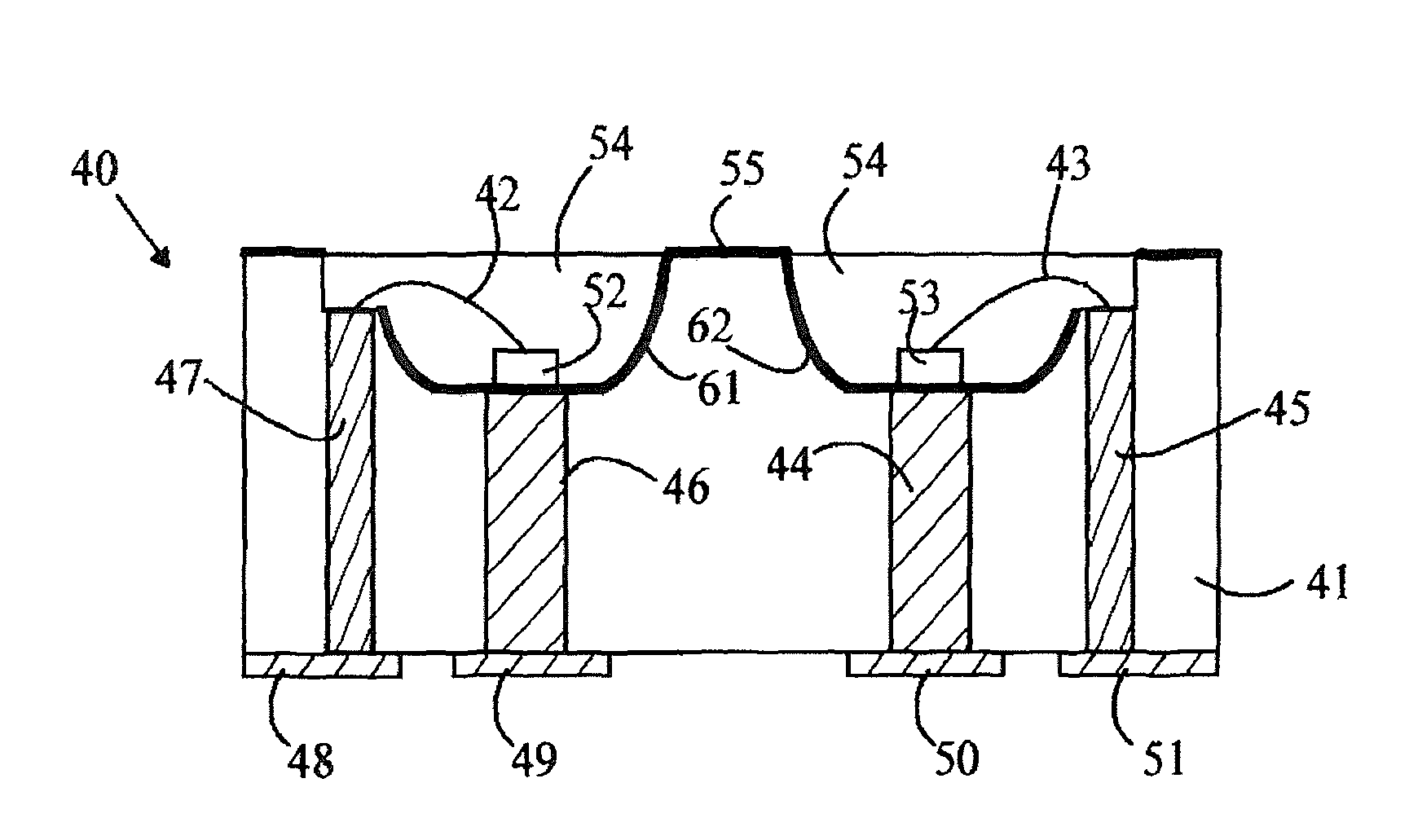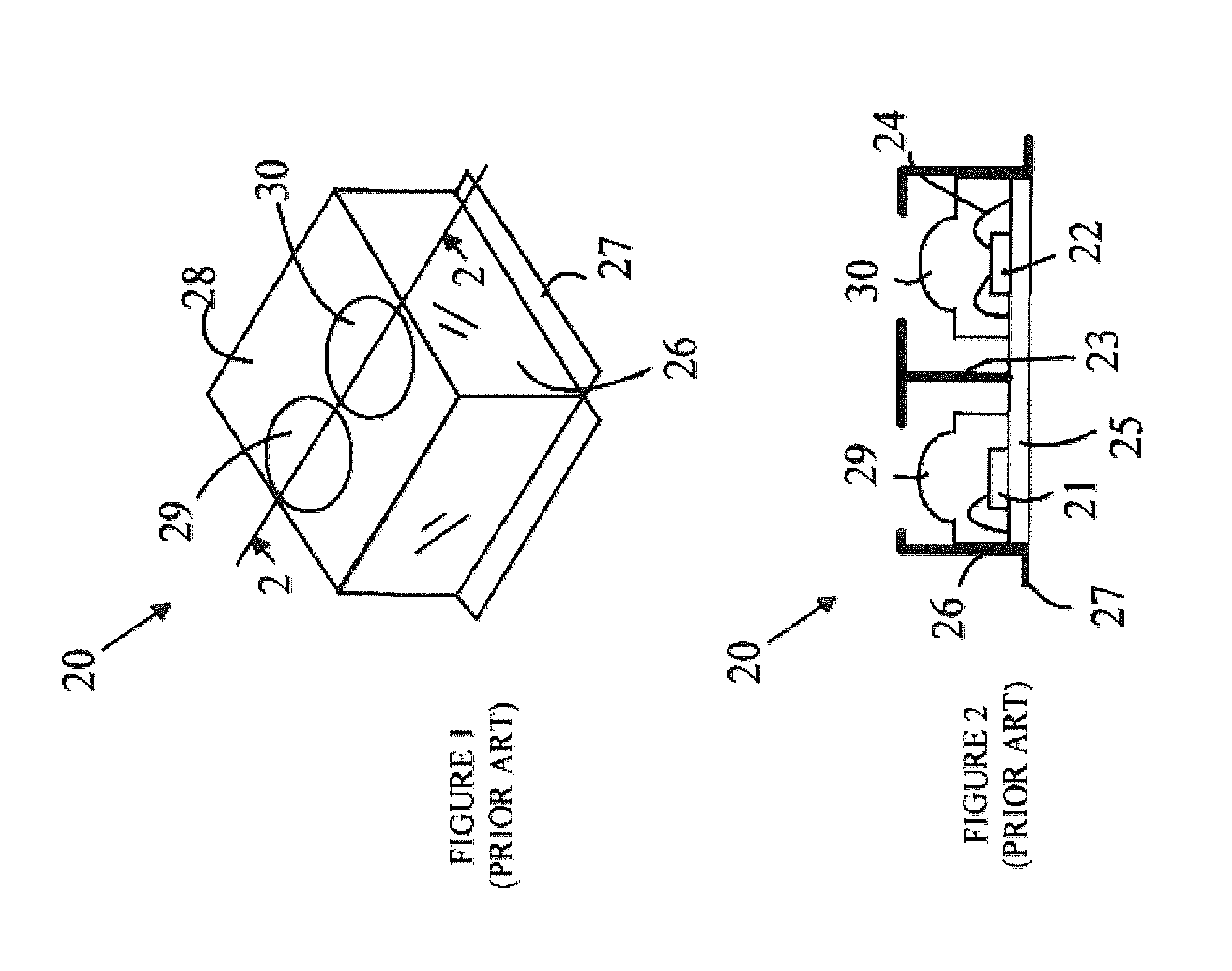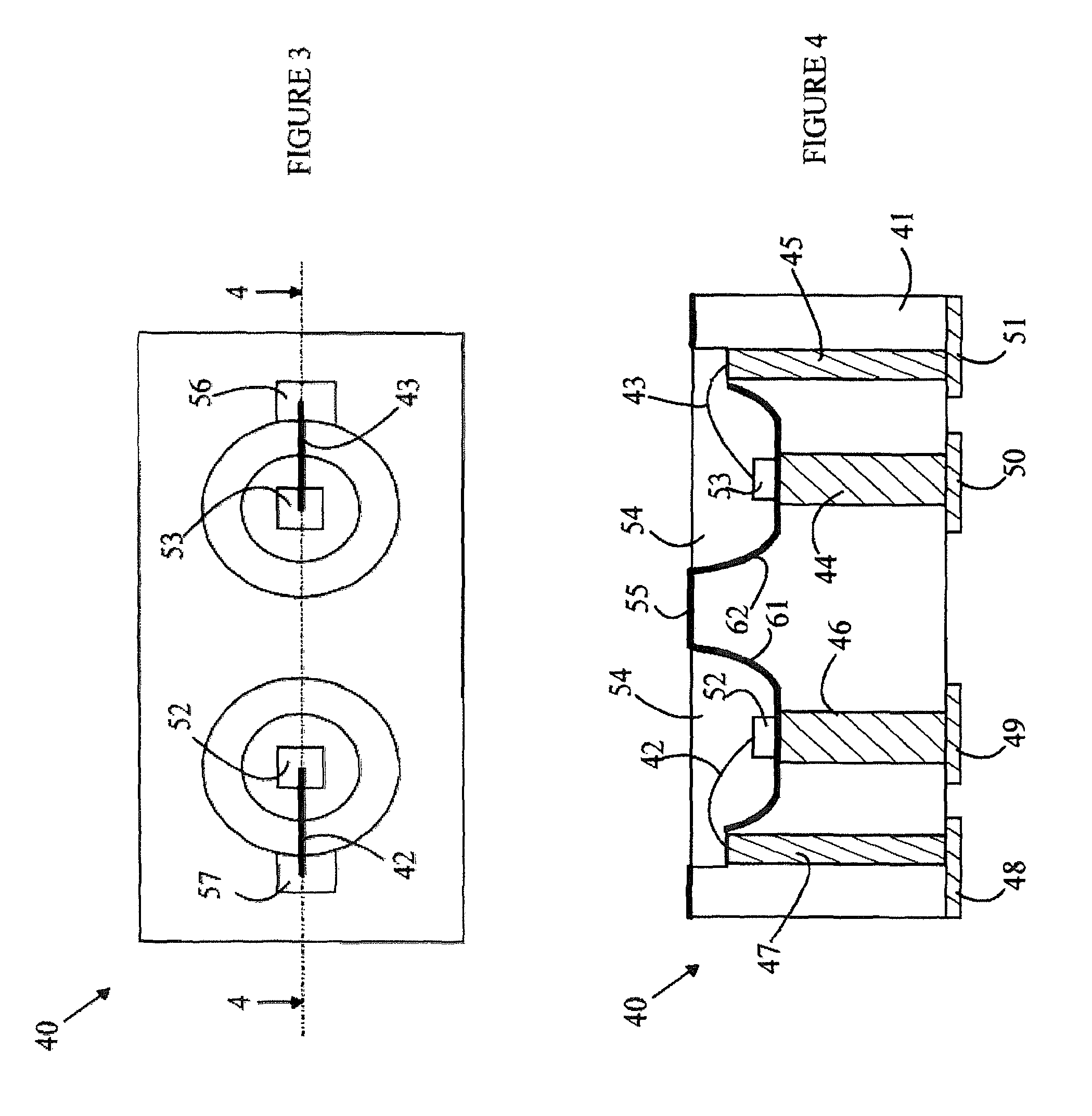Optical transceiver with reduced height
a transceiver and optical technology, applied in electromagnetic transceivers, counting objects on conveyors, instruments, etc., can solve problems such as inability to solve solutions always viable, limit the size of transceivers, and low signal-to-noise ratio
- Summary
- Abstract
- Description
- Claims
- Application Information
AI Technical Summary
Problems solved by technology
Method used
Image
Examples
Embodiment Construction
[0012]The manner in which the present invention provides its advantages can be more easily understood with reference to FIGS. 1 and 2, which illustrate a prior art transceiver module. FIG. 1 is a perspective view of transceiver 20, and FIG. 2 is a cross-sectional view of transceiver 20 through line 2-2 shown in FIG. 1. Transceiver 20 includes an LED 21 and a photodiode 22 that are bonded to a carrier 25 that includes a number of electrical traces that are utilized to connect the circuit components to the carrier and the carrier to an external printed circuit board or the like. To simplify the drawings, these traces and the control circuitry that operates the LED and photodiode have been omitted. The connections to the top surfaces of the dies containing the LED and the photodiode are made via wire bonds that connect the pads on the top surface of the dies to pads on the top surface of carrier 25. A typical wire bond is shown at 24.
[0013]After the dies have been mounted on carrier 25...
PUM
 Login to View More
Login to View More Abstract
Description
Claims
Application Information
 Login to View More
Login to View More - R&D
- Intellectual Property
- Life Sciences
- Materials
- Tech Scout
- Unparalleled Data Quality
- Higher Quality Content
- 60% Fewer Hallucinations
Browse by: Latest US Patents, China's latest patents, Technical Efficacy Thesaurus, Application Domain, Technology Topic, Popular Technical Reports.
© 2025 PatSnap. All rights reserved.Legal|Privacy policy|Modern Slavery Act Transparency Statement|Sitemap|About US| Contact US: help@patsnap.com



